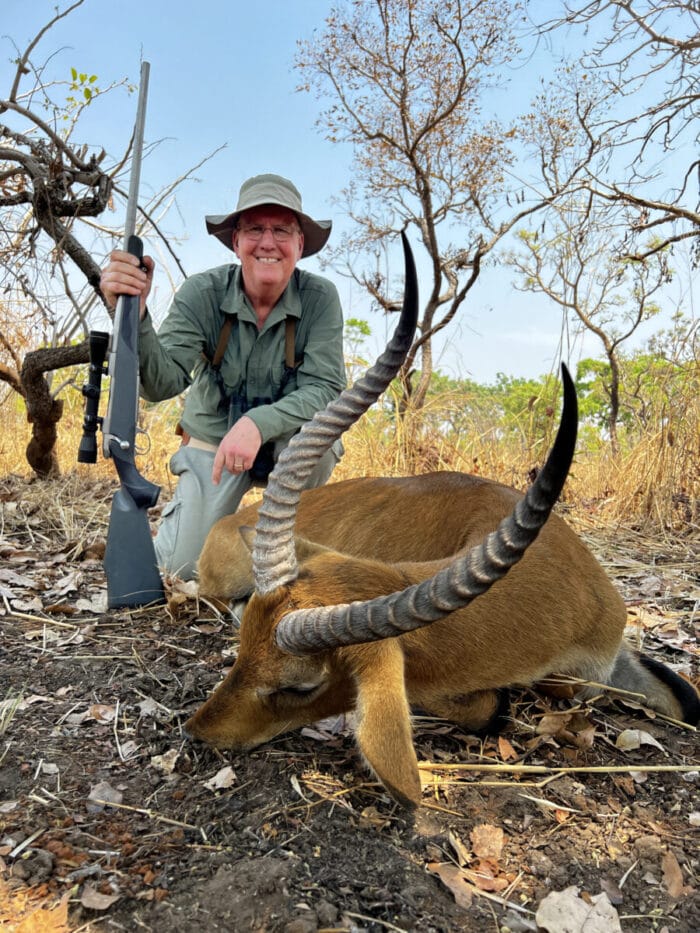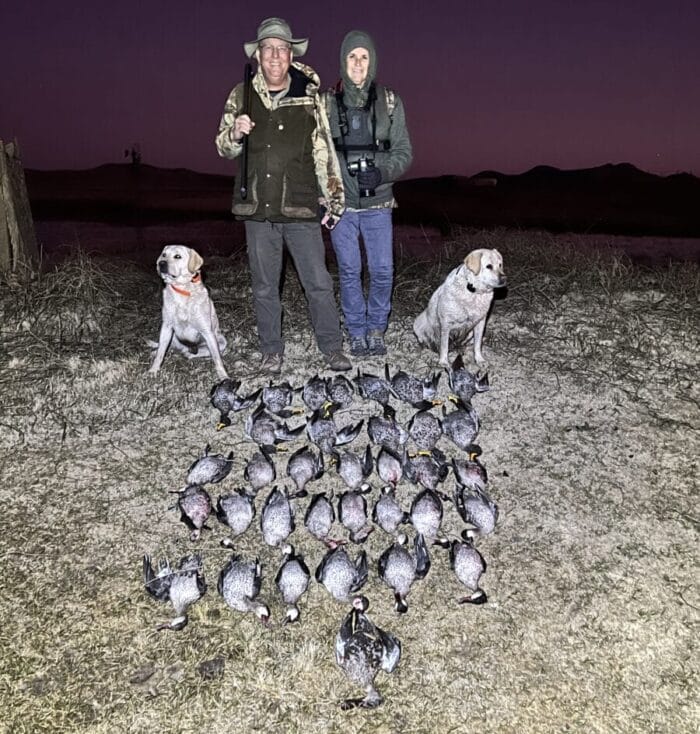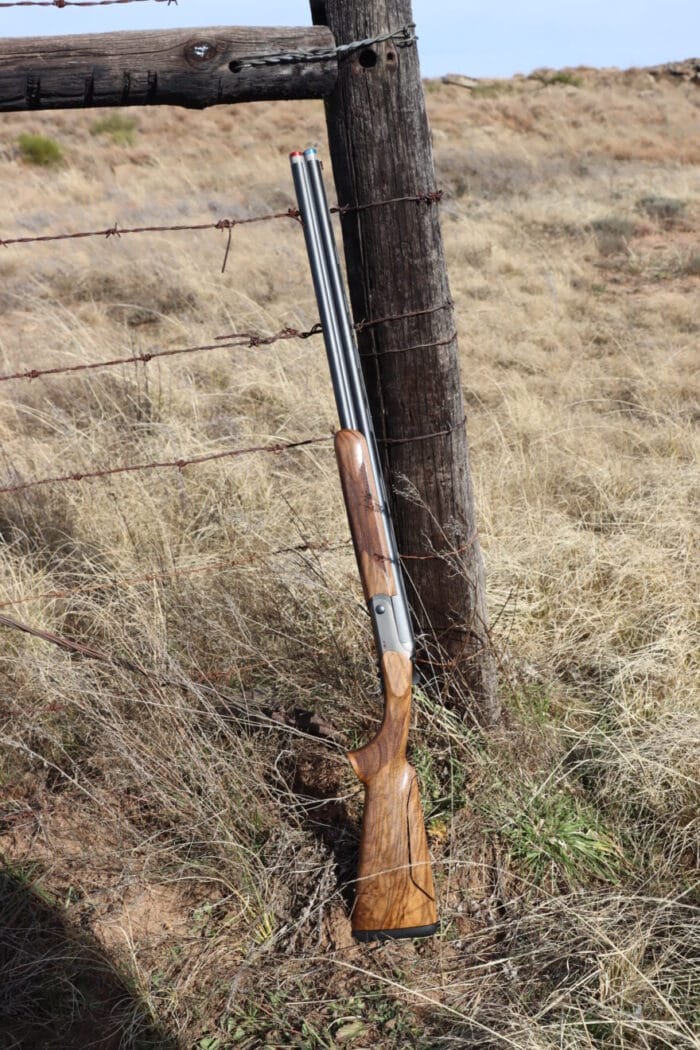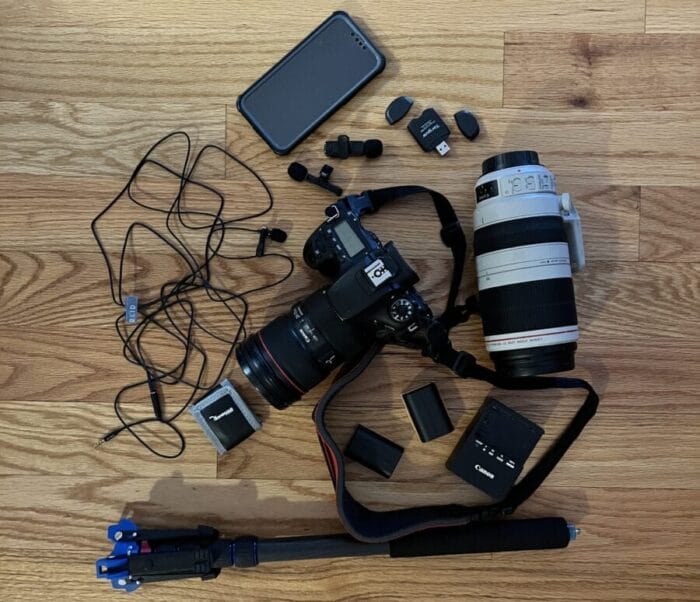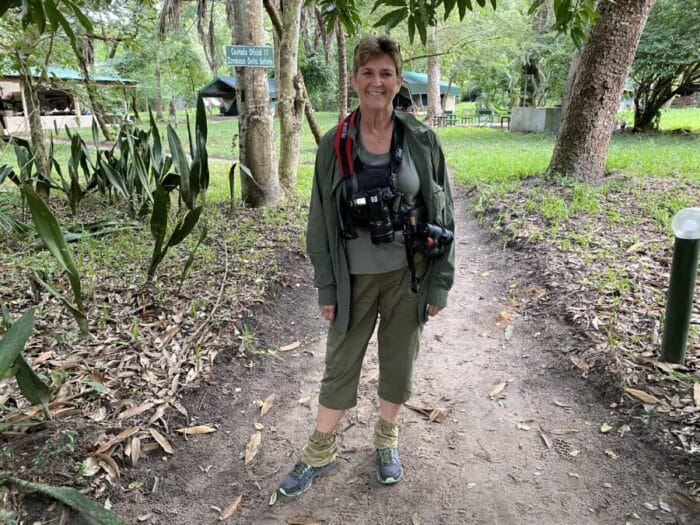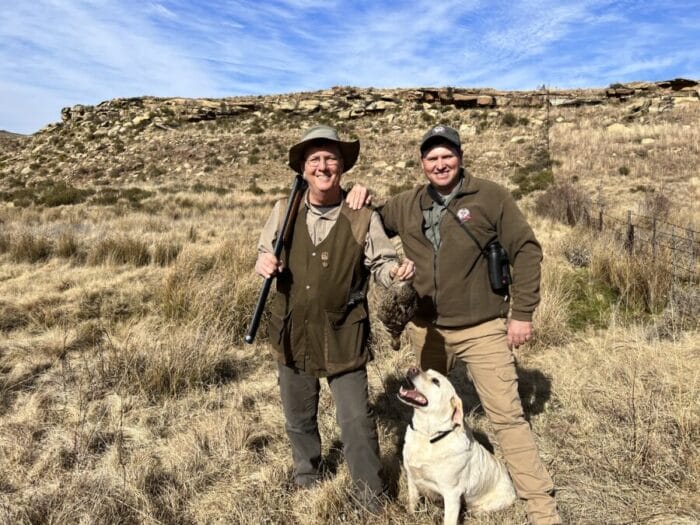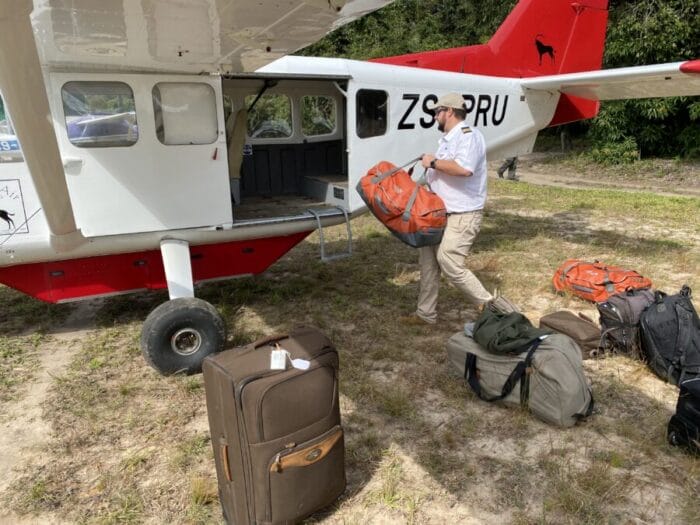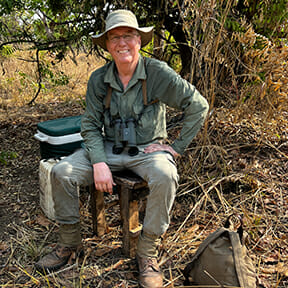Planning an African Safari for Gamebirds…and More Pt. 2
Packing for Safaris – Complicated or not?
I’m covering this topic throughout this article, but let me make some general observations. I’ve heard talks and read articles from several authorities on African safaris suggesting packing for trips to the Dark Continent is much simpler and more accessible than other hunting destinations. I’ve found that sentiment accurate in some ways and inaccurate in others. First, let me get my self-imposed complications out of the way. I’m an outdoor writer as well as a research scientist. So, I need my laptop with extra storage for backing up data, photographs, and videos. Of course, I also need multiple cameras and video and recording equipment. All that makes my life more complicated and provides much interest and creativity, so I have no complaints. As an aside, when I reached out to a Facebook Forum on African Hunting recently, asking for advice on how to proceed with this article, one respondent (I won’t call them an Internet Troll. They sounded more like someone who believed they knew everything. Never mind, that is a large part of the grumpy old Troll’s makeup.) accused me of “making a mountain out of a molehill.” Maybe so, but I do believe in the six P’s.
Even for ‘normal’ hunters, the required equipment, clothing, and personal items can be extensive but always accomplishable. Let me use myself again in support of this contention. Treatments for Stage 4 cancer in 2017 left me without a functional endocrine system (except for my pancreas, thank goodness!). This loss of organ functions means I carry nine different daily medications, including some needing refrigeration. Why am I telling you this? It’s essential that these medications accompany me everywhere and that they remain protected from extreme temperatures. But, with some prior planning, handling this complication is no problem and doesn’t detract from the safari experience. If you have a similarly complicated issue, medical or otherwise, don’t let it stop you from going on that bucket-list trip!
Clothing
So, what essential clothing is needed for an African safari, bird and otherwise? Daily laundry service is the norm when you’re in camp. That does not mean your clothes will always appear by evening after being collected by the staff in the morning, but usually, it does. If it is the wet season, and you’re not in a lodge with clothes dryers, there may be a day’s delay in getting your clothes back. For that reason, I take three sets of clothes – one for the day I’m hunting, one from the day before, and a third set in case the previous day’s clothing returns after two days. This has always been plenty of clothes. If it is dry season, or you’re somewhere with clothes dryers available, this is likely one set too many.
Regarding clothing coloration, ask your outfitter whether the government allows camouflage. Currently, the Republic of South Africa allows camouflage, but Cameroon, where I also hunted in 2023, does not. Country rules can change overnight, so always ask the safari outfitters, not your best bud, or an online forum. I prefer light green, dark khaki, or light brown clothing for Africa. I’m never worried about the camouflage issue, and I also feel comfortable wearing those shirts and pants to the dinner table in a lodge or a restaurant in town. Please don’t be the ‘D’ word, showing up like one client in a buddy’s camp in Mozambique with nothing but black pants and a white t-shirt. It’s hard to sneak up on Cape Buffalo in that trendy outfit…
The warmth level of clothing depends on when and where you’ll hunt. My bird hunting safari happened at 6000 feet during the South African mid-winter; June is one of the coldest and driest months in the Eastern Cape. The average predicted daytime temperature during June was 68o Fahrenheit. It doesn’t sound too bad, right? The actual temperature during our safari was at least 10 degrees cooler, with most days also presenting a 25-mph sustained wind with gusts to 45 mph. To quote my wife, Frances, “I just want my toes to thaw out!” We had a wonderful time because, as advised by the outfitter, we brought plenty of layers, including knit caps and warm gloves. Pay attention to the outfitter’s packing list and use common sense. If you are cold-natured and going into a mountainous area during winter, take extra warm clothing. I don’t think you’ll enjoy toughing it out. Likewise, if you head to a destination where it is 110o .
In Fahrenheit by 9 am every day (another of my recent safaris), take lightweight, wicking shirts, socks, underwear, shorts, and a broad-brimmed hat.
For my Eastern Cape adventure, clothing also needed a loose fit for climbing rock escarpments and running after rapidly departing Greywings, Guinea fowls, and dogs. I wore my Courteney boots from Zimbabwe because I was also hunting plains game and wanted relatively soft and quiet soles. If you’re only hunting birds, you could wear more rugged, waterproof footwear for the rocky and sometimes stream-laden Eastern Cape landscape.
Finally, in the Stormberg lodge with a fireplace, I wore my extra set of hunting clothes, with flip-flops instead of boots. If my safari lands in a warm time of the year, I take shorts, a t-shirt, and flip-flops for around camp and the fire pit.
Equipment – To take, or not to take, a shotgun (firearm)?
If you’re not gathering information for articles and books and writing while traveling, remember, I am NOT complaining about being a writer/scientist! – the equipment list is relatively short. Your major decision will be whether to take your shotgun (or rifle for big game) or rent one from the outfitter. Most people rent firearms when on hunts outside their home countries. I almost always carry firearms with me. I have two reasons for this. Quite often, manufacturers ask me to use their products on a hunt. For example, the US-based Blaser Group provided me with an F-16 for the bird safari (and a new model R8 in .300 Winchester Magnum for Plains Game). Second, and for me of greater importance, I almost always shoot better using a firearm I practice with before the safari. Analogous to breaking in new boots, pre-safari practice develops muscle memory for proper mounting, swing, etc. If you are taking your shotgun, carry a soft-sided case for the truck. The outfitter likely has one they can loan you, but you’ll know your case fits your shotgun.
Unlike rifles, you will almost certainly not take shotgun ammunition to Africa. Current weight restrictions on airlines (maximum of 5 kg = 11 pounds of ammo) limit a hunter to the equivalent of 3-4 25-round boxes of 12-gauge shells. Maybe that’s enough for you, but I am not that good of a shotgunner. Any outfitter for a bird hunt in Africa will have plenty of shells for purchase; this simplifies your travel considerably.
Before you travel with your firearm, you must obtain the required Import Permit from the destination country. Your outfitter should have a company they’ll recommend to handle this for you. If they don’t, you should choose another outfitter. The forms and requirements for firearm importation change frequently in African countries, so let the company’s staff guide you. The United States government requires a Form 4457 (Certificate of Registration for Personal Effects Taken Abroad), signed by the U.S. Customs and Border Protection when traveling internationally with your firearm. You must take your shotgun (or rifle) and the 4457 Form to your local Customs and Border Protection office for the signature. The U.S. Customs and Border Protection Field Offices are located across the country, sometimes at an international airport because they are port-of-entries; for example, I use the location at the nearby Atlanta airport.
The 4457 form includes space for your name, address, firearm description, and serial number. You can get a copy of the 4457 forms at the Customs office, but I fill them out before going. DO NOT take your firearms into the government office. Leave them in your vehicle, and let the Customs officer know they’re there if they want to inspect them. The signed 4457 form travels with your firearm in your lockable, hard-sided gun carrier. I always make at least five copies of the signed form in case someone I encounter wants one for their file.
Another travel hack I find essential when heading overseas with a firearm is a meet-and-greet service that will accompany you and your firearm through the entry process at the destination airport. It always helps to have someone who knows the local customs agents and speaks the native language. Once again, your outfitter will have a recommendation for this service; often, it is the same company that handles the firearm importation permit.
While we’re discussing entry requirements, some African countries where you might be on a bird safari require a visa before you arrive; some provide the visa when you get there, and for some, such as South Africa, no visa is necessary for citizens of certain countries, like the USA (for now).
Equipment – Cameras and optics
As mentioned, we need multiple cameras, but you can use a mobile phone and have perfectly acceptable photographs and videos for personal use. Remember, for phones and all other rechargeable electronics, you’ll need outlet adaptors specific to your travel country. There are multi-country adaptors complete with slots for plugging in USB connections. Google what the country’s electrical outlets look like, and order a set from Amazon, etc. Speaking of phones, if traveling with a partner, I’d highly recommend paying for international calls for each phone. These so-called ‘plans’ are inexpensive and come in handy when trying to find one another when you go on separate errands at the airport or in town.
If you choose to carry a camera as well as your iPhone, choose something light. I lug around a telephoto lens – or my wife, Frances, does actually – but that’s our self-inflicted complication. If you do take a heavier lens of some sort, Frances suggests investing in a monopod for supporting and stabilizing the rig. She has gotten some amazing long-distance shots with this setup, as did I on the rare and spooky Père David’s deer on a recent trip to Sweden.
Keep in mind you won’t need a telephoto lens for 99.99% of the photographs you’ll want, relaxing on that rare occasion, using your binoculars, and storing the encounter in your brain cells rather than on a SIM card. One other accessory Frances uses for hauling the camera and her binoculars is a Cotton Carry System CCS G3 Grey Harness-1. Again, we need this setup because of the extra optical equipment required. But Frances swears by it, securing camera and binoculars, freeing her hands up for stalks through rough terrain.
Binoculars are indispensable and should be the highest quality you can afford. I would also highly recommend purchasing a binocular with the capacity for range-finding. This is not necessary for bird hunting – unless you want to know exactly how far you must walk before you reach that flock of Guinea fowl pecking away at the edge of some distant field – but if investing for future safaris (or hunts elsewhere) that might involve bow or rifle, this is a very valuable option. There are many excellent products out there; my own binocular rangefinder is the Vortex Fury HD 5000, 10×42. I’ve used this model for years, and it works well. Take your pick but pay the extra necessary for a quality product; the better optics are much clearer, helping you avoid eye strain and headaches and making those birds feeding along the edge of that field at 500 yards discernable.
Before we leave the discussion of binoculars, I highly recommend investing in a harness as well. My Binocular Harness comes from Hornady, but they can be found in many manufacturers. This inexpensive piece of gear will keep your binoculars from swinging wildly and pummeling you when climbing hills or running after escaping coveys. And, when forced to crawl on a spot-and-stalk in pursuit of Guinea fowls, the harness will prevent your expensive optics from dragging along the rocky, dusty landscape.
Miscellaneous personal items and gear
This section is a catchall, so I’m tossing together items from several categories.
So, here goes:
First, take every medication you require, including malarial prevention, if you’re traveling to an area where this disease is endemic. South Africa should not present you with an area that has malaria, but ask your outfitter. You’ll likely need some over-the-counter pain medication. I also take an opioid with me. No, I’m not addicted, and I’ll never take them unless a catastrophe occurs – a broken bone, kidney stone, or the like – but if needed, they will save me or someone else from enduring agony. Finally, seriously consider having your primary care doctor prescribe an antibiotic that works on everything from stomach bugs to sinus infections. These drugs exist. Again, I don’t take them unless ill, but they have rescued a few trips. I know it isn’t a medication, but don’t remove sunscreen from your kit. I wouldn’t say I like wearing sunscreen, but the African sun will strip the hide off you. Wear it even if, like me, you whine about having to do so.
Another set of items relates to sight and hearing. Take an extra pair of prescription eyeglasses, including reading glasses. I lost a pair of $600 glasses while chasing after the dogs that were chasing a leopard at night through a dense Mozambique sand forest. I am far-sighted, and it was pitch black except for the beam of my headlamp, so I didn’t miss them for some time after being ripped from my face by one of the thorn-studded branches. Fortunately, I had a replacement pair at camp. Of course, Frances and I had ‘the discussion’ about the cost of the missing glasses… While we’re on this episode, I could not have made my way through the forest without a headlamp rather than a handheld flashlight. I started using a headlamp on biological field surveys decades ago and never returned to a flashlight. And, while on glasses, most outfitters list sunglasses as necessary equipment. I don’t wear them. Mostly because I need a prescription and don’t wear contacts. Switching between clear and shaded lenses is a pain, and I decided a long time ago I prefer to squint if the sun is too intense. Besides, one benefit of squinting is that it makes me look like Clint Eastwood.
Unlike sunglasses, I adopted high-efficiency hearing protection many years ago, choosing electronic earplugs. Like optics, there are many available choices. My pair is ESP America’s Stealth model. They are not inexpensive, but I’ve worn them every day, all day long, on countless 1–3-week safaris and hunting trips, and at the gun range, across many years, and never noticed I had them in my ears. They activate when I pull the trigger on a firearm, like the 12-gauge on my bird safari, blocking out the damaging frequencies but amplifying voices so that I hear my PH whispered instructions. As an aside, several months ago, a manufacturer of electronic earplugs offered me a new, more expensive set. I declined their generous offer. I’ll stick with what I know works for me; thank you.
Additional Safari Hacks
This final informational section contains several suggestions of items and preparations mostly thought of by my wife, Frances. Quite a few of the suggestions appearing in this article originated with Frances. We find the following to be great energy and patience savers – OK, patience saving is generally necessary for me.
We now always travel with a small rolling suitcase. Remember, all lithium battery-powered items must go as carry-on. Given the occurrence of lithium batteries spontaneously igniting, this is a good rule. We use the small case for any of these items and the extra batteries. We also pack fragile items in there, even if they don’t contain potentially ignitable batteries. Finally, we pack a set of clothes for each of us in the rolling case on the chance that we end up at the destination waiting for our checked bags for a day or so.
Staying with the bag category, if you will need soft-sided duffel bags for smaller aircraft into camps and don’t want to drag around a heavy, wheelless bag (yes, you can buy wheeled duffels, but they aren’t generally large enough for our needs), consider using a big, wheeled suitcase into which you place the open duffel and into which you pack your gear. When you arrive at your destination country, you pull out the duffel and store the suitcase at the guesthouse or in the outfitter’s office at the airport from which you take the smaller aircraft.
If you are carrying firearms, it is beneficial if the reinforced, lockable case for the shotgun/rifle also has wheels. Your ammunition must also be in a hard-sided, lockable box. For US airlines (for now, anyway), pack no more than 11 pounds (five kilograms) of ammunition in the locked case and place it into your checked baggage. When you arrive in South Africa and board an internal flight, you remove the ammunition box from your suitcase and check it separately (again, present rules). Finishing with the bags portion of our programming, if you plan any shopping trips, it’s advantageous to have a small exercise bag/duffel that you can carry over your shoulder – and remember, you’ll probably need local currency in small denominations.
While we’re talking cash, you’ll need a plan for tipping. Ask your outfitter for a list of people you will tip at the end of your safari. Ask the tip amount for each and whether they want it in dollars (Euros, etc.) or local currency. Whenever we needed tips in local currency, the outfitter had a mechanism for exchanging our dollars for the required amounts of local money.
The final hack Frances and I found an incredible timesaver in US airports is our Global Entry registration, and now, Visual ID through Delta Airlines. Both lead us through shorter and faster TSA lines. Global Entry significantly speeds up the reentry into the US when fried from the long overseas flight. Signing up for the Global Entry takes some time, but it is worth it. If you fly Delta, their site will walk you through the Visual ID process – which, unlike the Global Entry registration, is very easy and quick to complete.
Conclusions
Traveling to Africa for a safari is the trip of a lifetime. That expectation can bring incredible enjoyment in the planning and preparation and at the same time, some serious angst. However, with proper due diligence and planning, safaris promise to be incredibly enjoyable experiences. This does not mean safaris will lack hassles, holdups, or disappointing episodes. But, in balance, the richness of experience a safari provides trumps all the minor mishaps.
One of the initial and most important decisions made by the safari client is whether they will carry a firearm or rent one from the outfitter. Once the client decides, a series of dominoes will fall, determining safari preparation, including training for the most accurate and ethical shots. The choice of carrying a firearm or not will also choose some of the additional equipment needs.
Safari hacks can alleviate some worries and thus spent energy on experiential concerns. Still, the best hack is the ability to roll with punches and enjoy the novelty of new cultures, food, animals, and people. Remember that regardless of whether everything goes perfectly, you will see sights and hear sounds few people will experience. The safari goer is genuinely in one of the most fortunate of people groups.
Mike Arnold has been a life-long hunter. The Hunter’s Horn blew very early for him. From the age of five, Mike has spent months each year pursuing game animals – from quail and rabbits behind his parents’ house, to kudu and leopard in Africa, and Brocket deer in Mexico. Mike’s articles include feature pieces in Sports Afield, Hunter’s Horn, Safari Magazine, and African Hunting Gazette. Mike also produced two TEDx presentations on the topic of conservation-through-trophy-hunting. You can find links to many of his articles and his Blog here.
Mike is also a Professor and the Head of the Department of Genetics at the University of Georgia. He works in conservation biology and is the author of the 2022 book, BRINGING BACK THE LIONS: International Hunters, Local Tribespeople, and the Miraculous Rescue of a Doomed Ecosystem in Mozambique. Mike’s book is available for purchase at bringingbackthelions.com, Amazon and local bookstores.

